Traditional Chinioti Furniture
Traditional Chinioti Furniture - A Legacy of Craftsmanship and Elegance
Traditional Chinioti furniture is a heritage of Pakistan. Nestled in the heart of Punjab, the city of Chiniot stands as a timeless symbol of Pakistan’s rich artisanal legacy. Known for its intricately carved solid wood furniture, Chiniot has long been recognized as the heart of traditional furniture making in Pakistan. For centuries, its craftsmen have combined artistic passion with technical mastery, producing some of the most ornate and durable furniture found anywhere in South Asia.
Whether gracing a royal residence, an upscale Pakistani wedding, or a heritage guesthouse, Chiniot-based furniture brings an unmistakable air of regality and tradition.
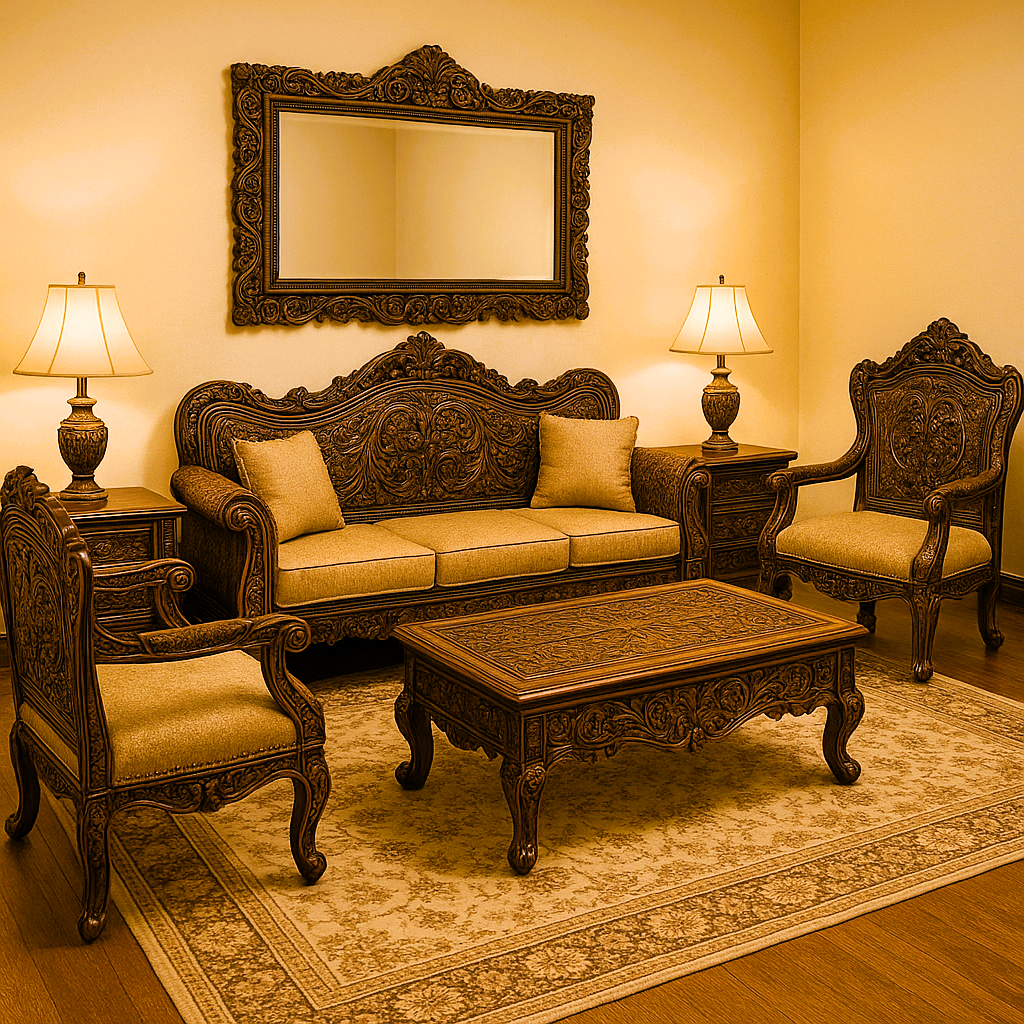
Traditional Chinioti Furniture - A Glimpse into Chiniot’s Artistic Heritage
Chinioti Solid Wood Furniture of Pakistan
The roots of Chinioti furniture-making can be traced back to the Mughal era, when artisans were commissioned to craft intricate woodwork for palaces and mosques. Over time, Chiniot developed its own distinct design language—one that reflects Islamic art, Mughal grandeur, and indigenous Punjabi culture.
Chinioti woodworkers are often part of family lineages, where skills are passed from generation to generation. Each piece of furniture is not just functional but a sculptural work of art, with attention paid to symmetry, balance, and deep carving.
Traditional Chinioti Furniture - Furniture Categories
Bedroom Furniture
Chiniot is renowned for its elaborate bedroom sets, which typically include:
- Beds: Often king-sized, with towering headboards carved with floral or calligraphic motifs.
- Side Tables and Dressers: Matching the bed in both carving and polish.
- Armoires and Cupboards: Majestic in scale, built for generations.
These sets are especially sought after in bridal dowries and traditional households.
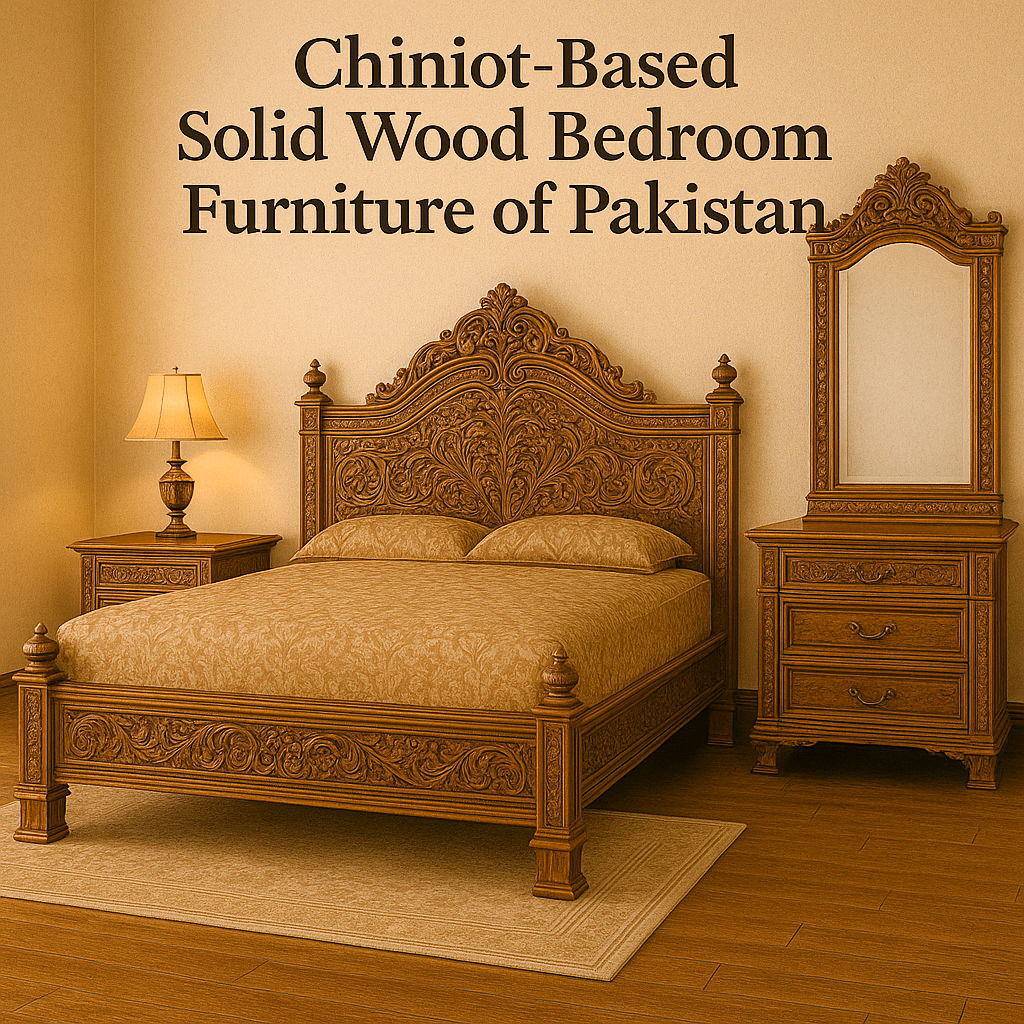 Chinioti Furniture-Bedroom Sets
Chinioti Furniture-Bedroom Sets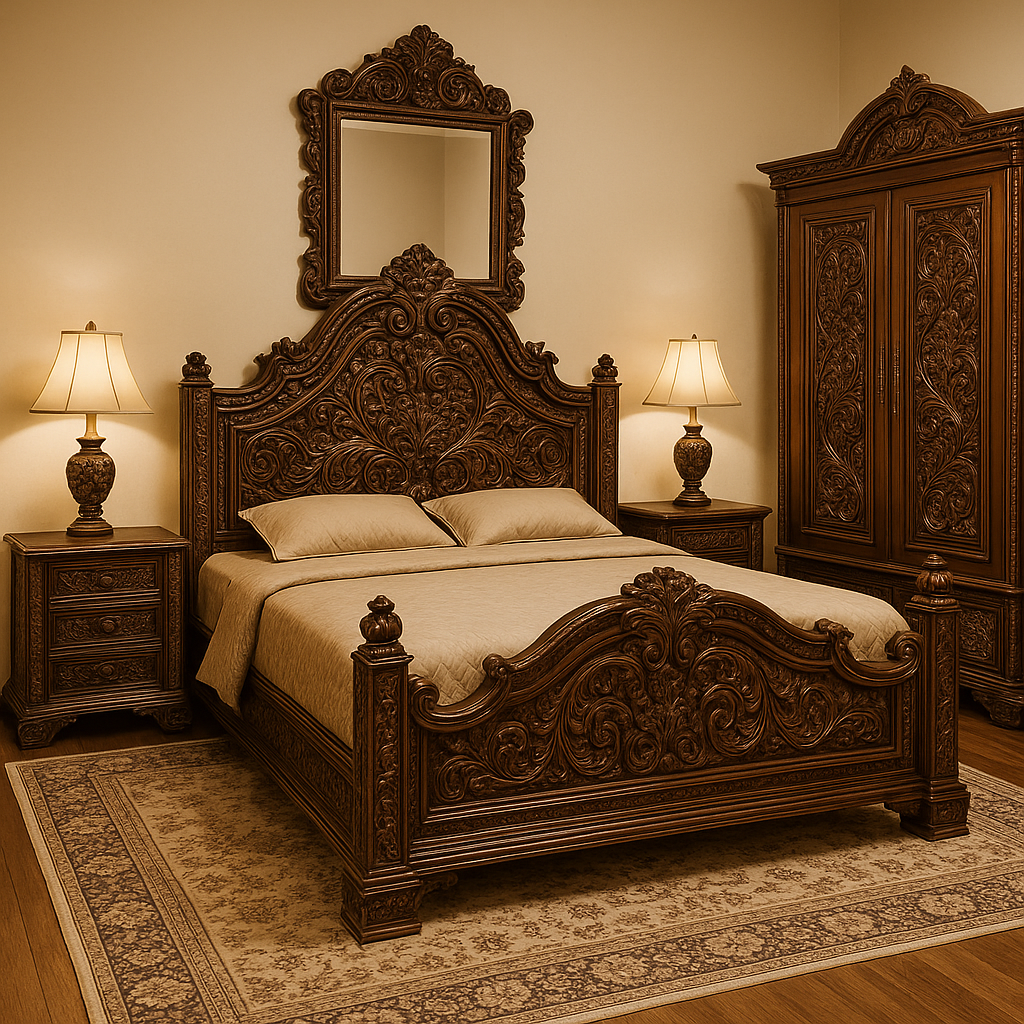 Chinioti Furniture-Bedroom Sets
Chinioti Furniture-Bedroom Sets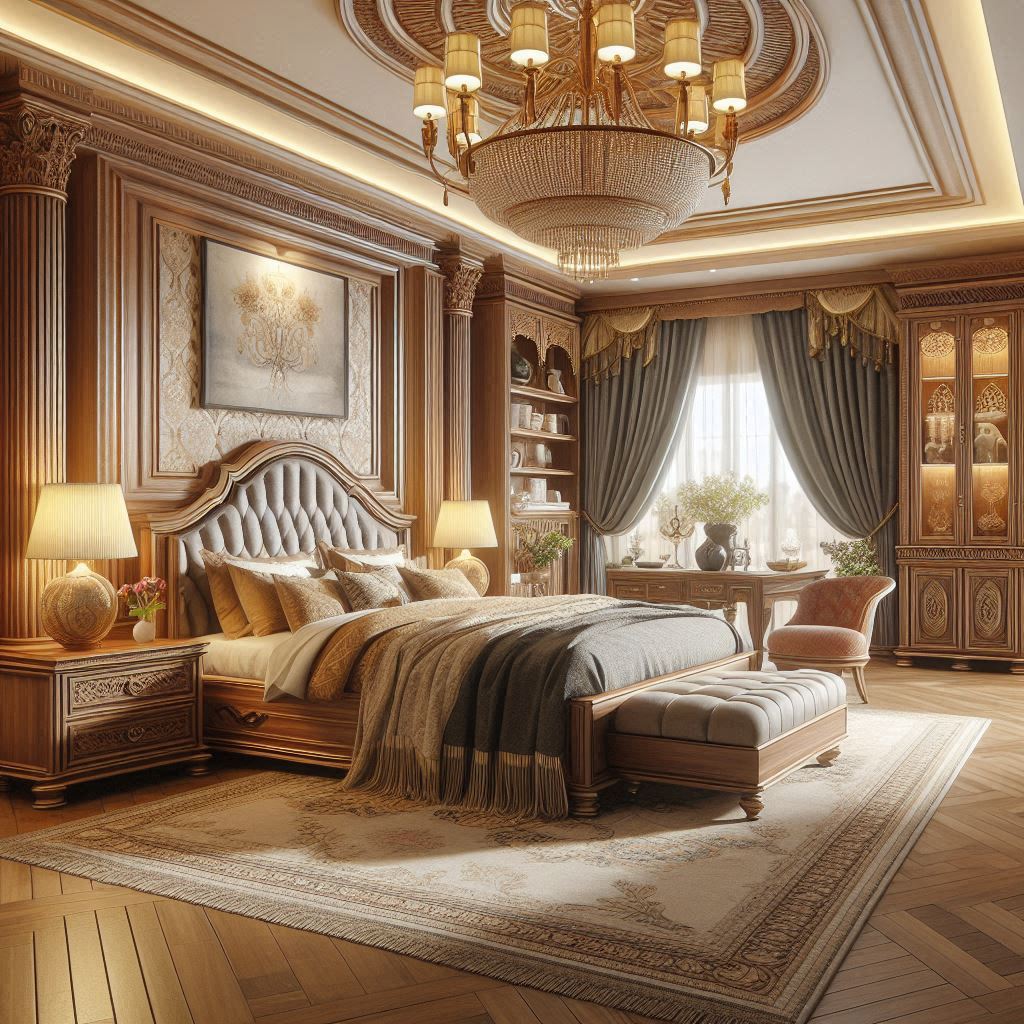 Chinioti Furniture-Bedroom Sets
Chinioti Furniture-Bedroom SetsLiving and Drawing Room Furniture
The drawing room is considered a symbol of hospitality in homes across Pakistan, and Chinioti furniture sets the standard for grandeur:
- Sofa Sets: Deeply carved wooden frames, upholstered in luxurious fabrics such as velvet or jacquard.
- Coffee Tables and Consoles: Often round or rectangular, featuring delicate floral borders.
- Wall Mirrors: Oversized, with carved borders that mimic Mughal archways.
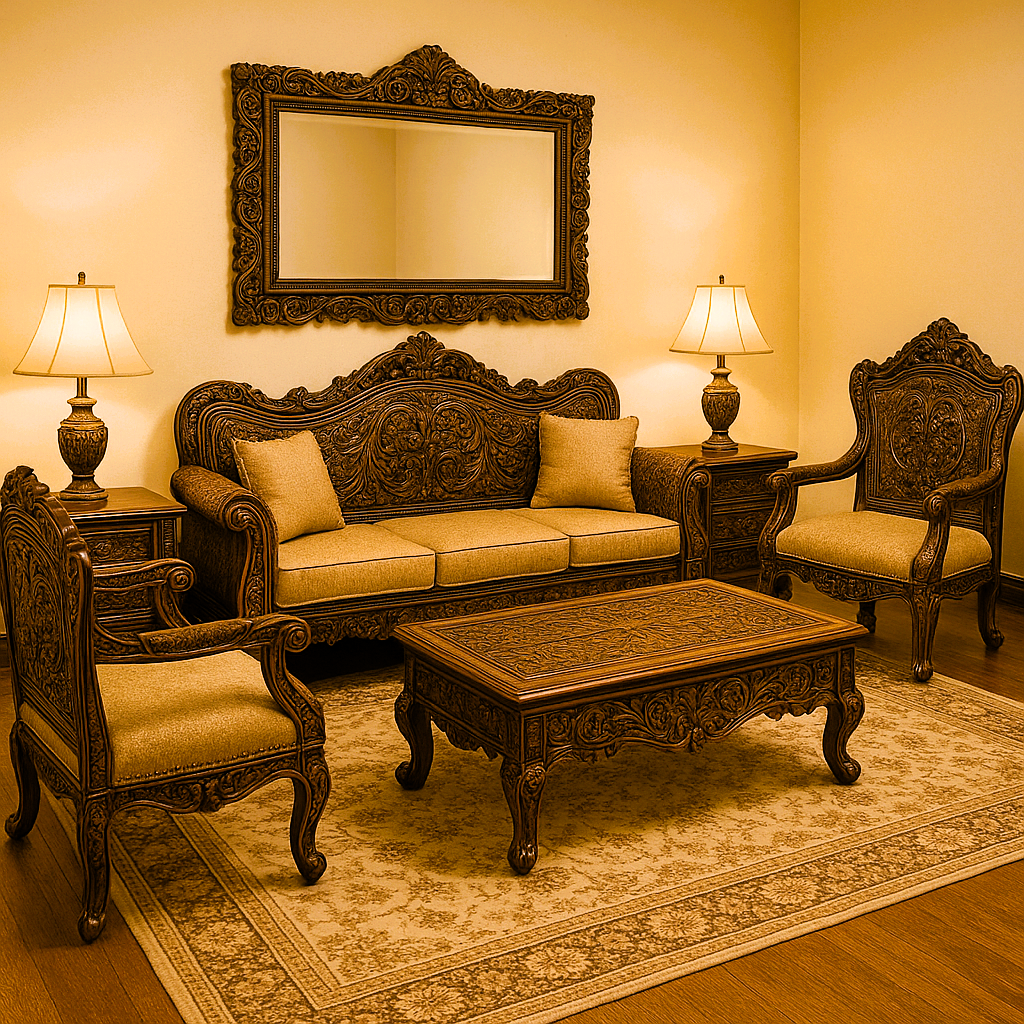 Chinioti Furniture-Livingroom Sets
Chinioti Furniture-Livingroom Sets Chinioti Furniture-Livingroom Sets
Chinioti Furniture-Livingroom Sets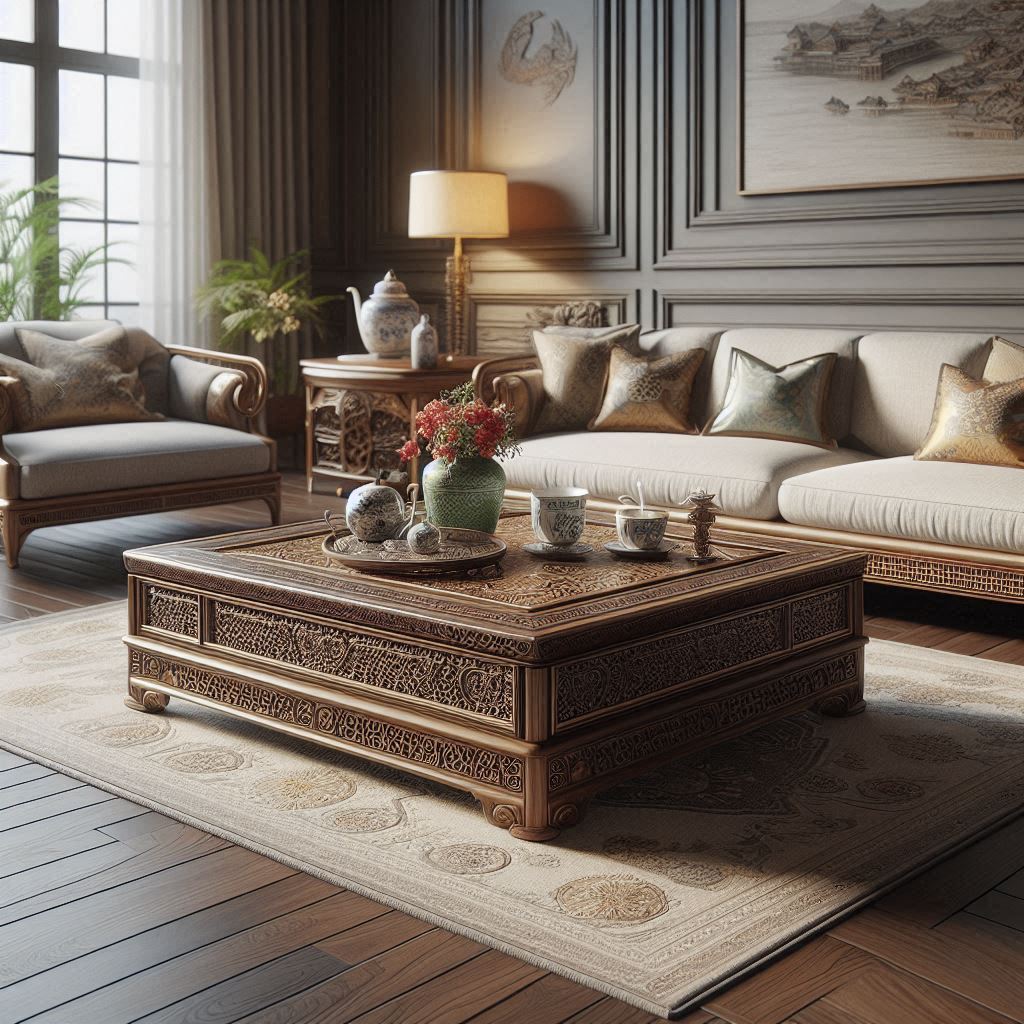 Chinioti Furniture-Coffee Table
Chinioti Furniture-Coffee TableDining Room Furniture
- Dining Tables: Usually 6- or 8-seaters with richly carved legs and matching chairs.
- Chairs: High-backed, with upholstered seats and curved wooden arms.
- Buffets and Crockery Units: Storage with character—detailed doors, brass inlays, and sometimes glass-paneled fronts.
Chinioti dining sets are a staple in formal homes and luxury farmhouse interiors.
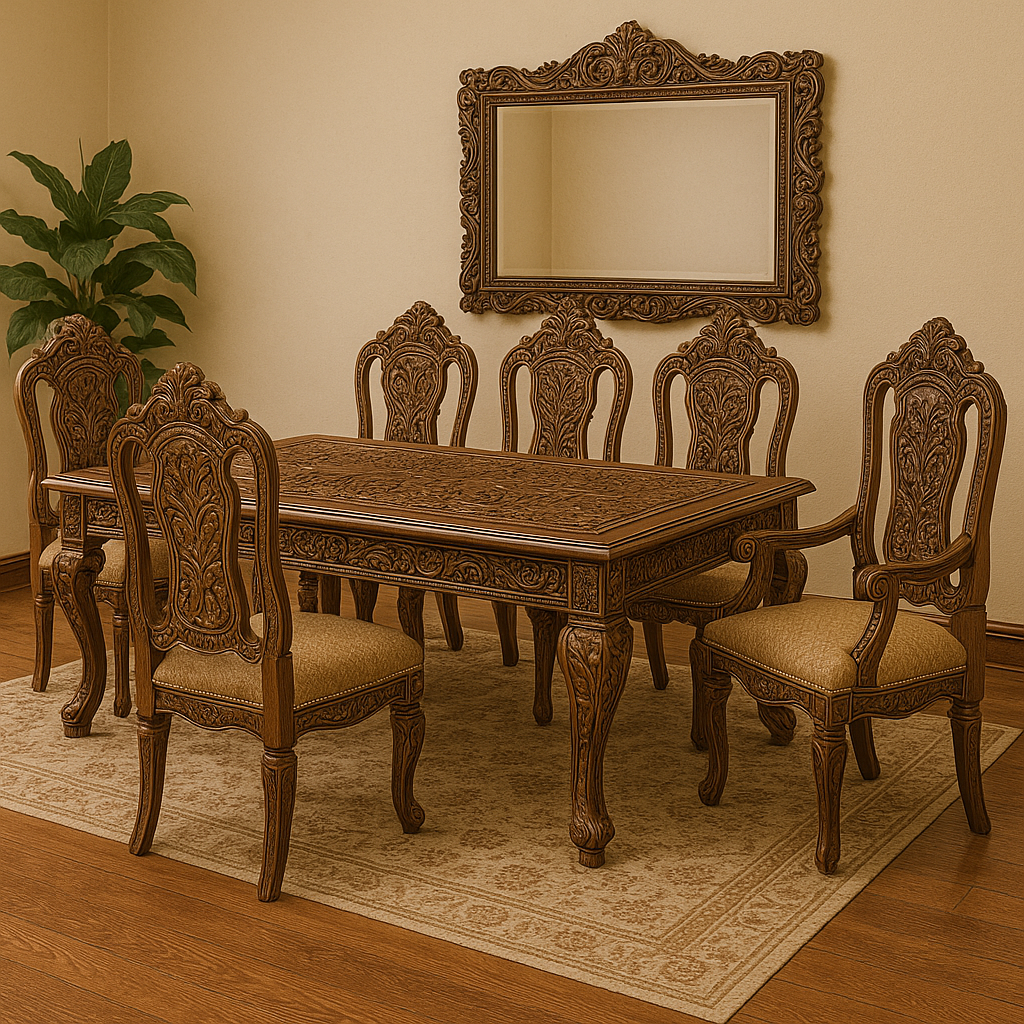 Chinioti Furniture-Dining Room Set
Chinioti Furniture-Dining Room Set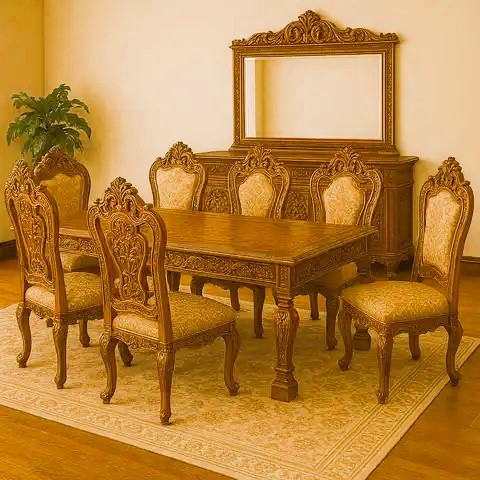 Chinioti Furniture-Dining Room Set
Chinioti Furniture-Dining Room Set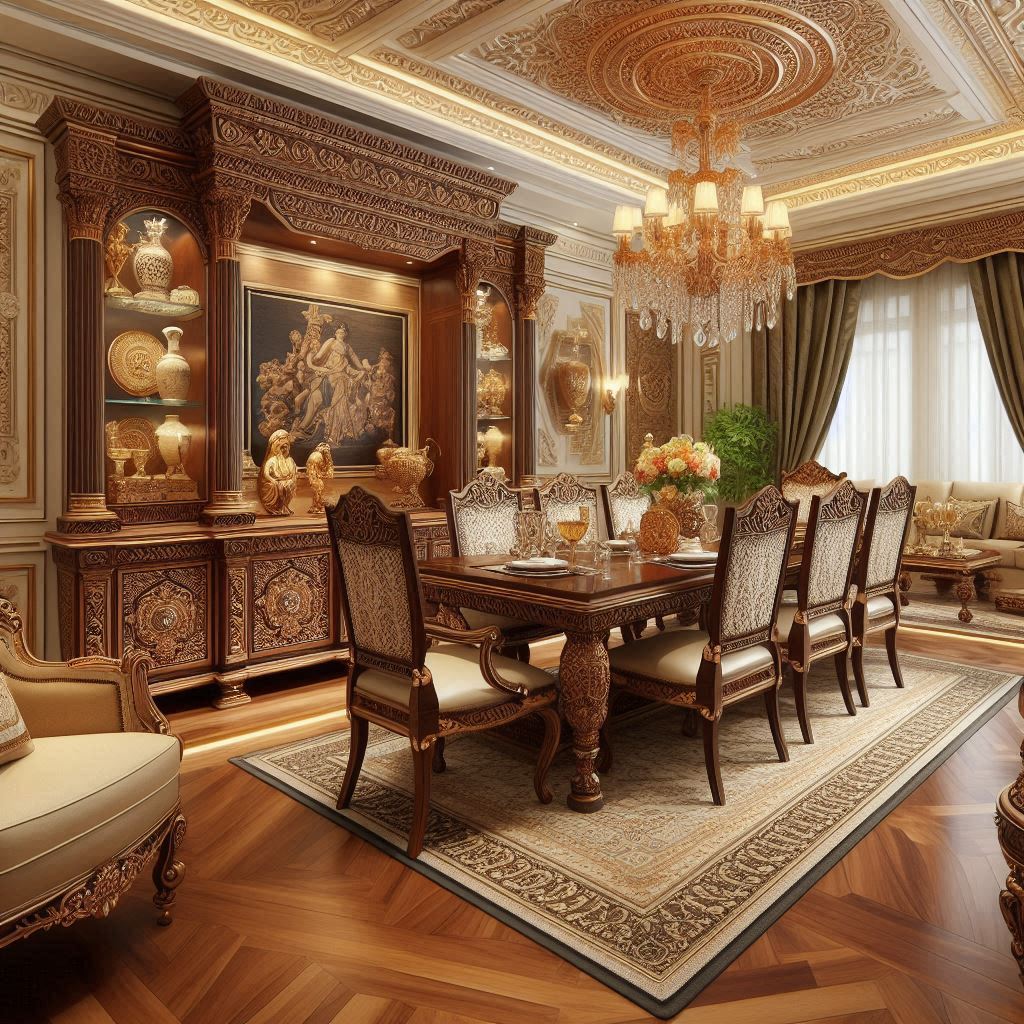 Chinioti Furniture-Dining Room Set
Chinioti Furniture-Dining Room SetReligious and Decorative Furniture
Chiniot’s craftsmen are also known for furniture that serves spiritual or ornamental purposes:
- Prayer Niches (Mehrab): Beautifully carved wooden arches used in homes and mosques.
- Qur’an Stands (Rehals): Carved from a single piece of wood, often gifted on religious occasions.
- Wall Art and Frames: Featuring Arabic calligraphy or carved verses.
- Interior Doors and Panels: Used in luxury homes and mosques for a grand, timeless feel.
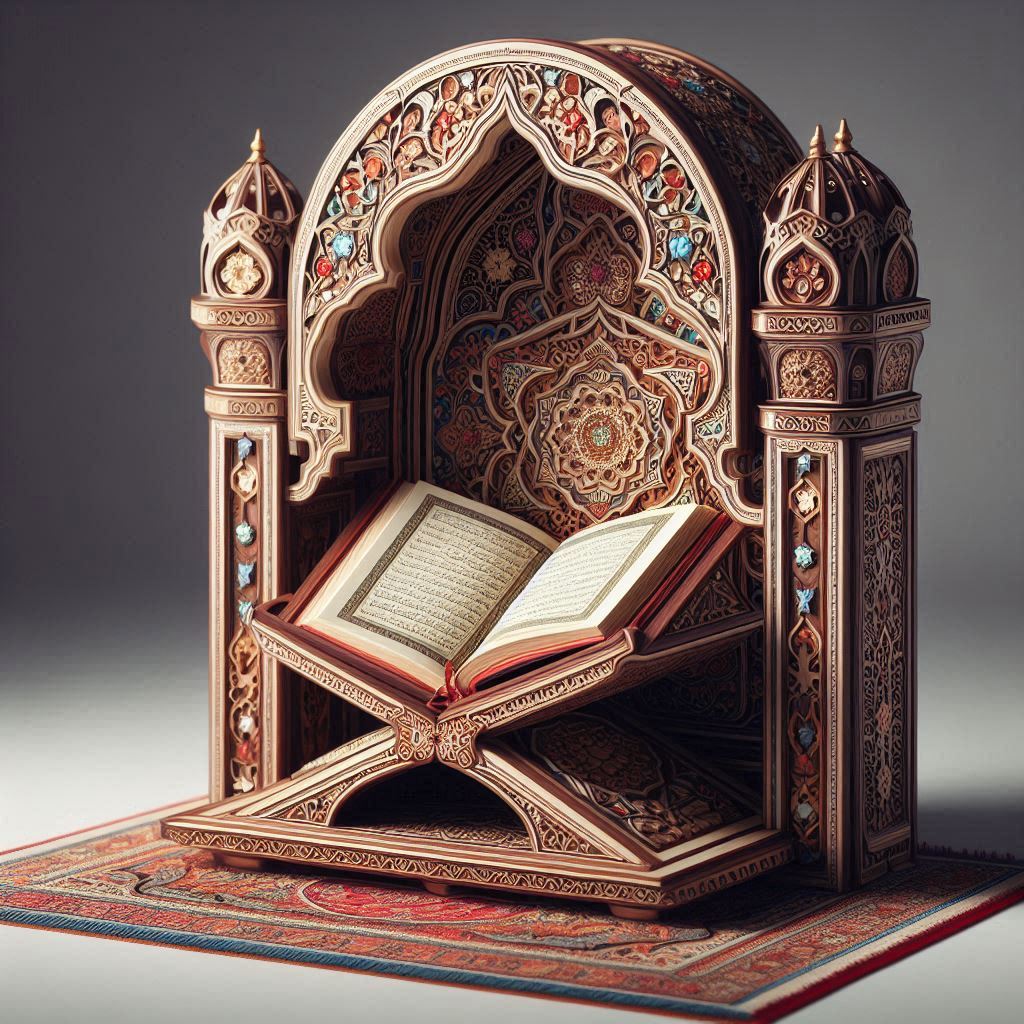 Chinioti Furniture-Rehal
Chinioti Furniture-Rehal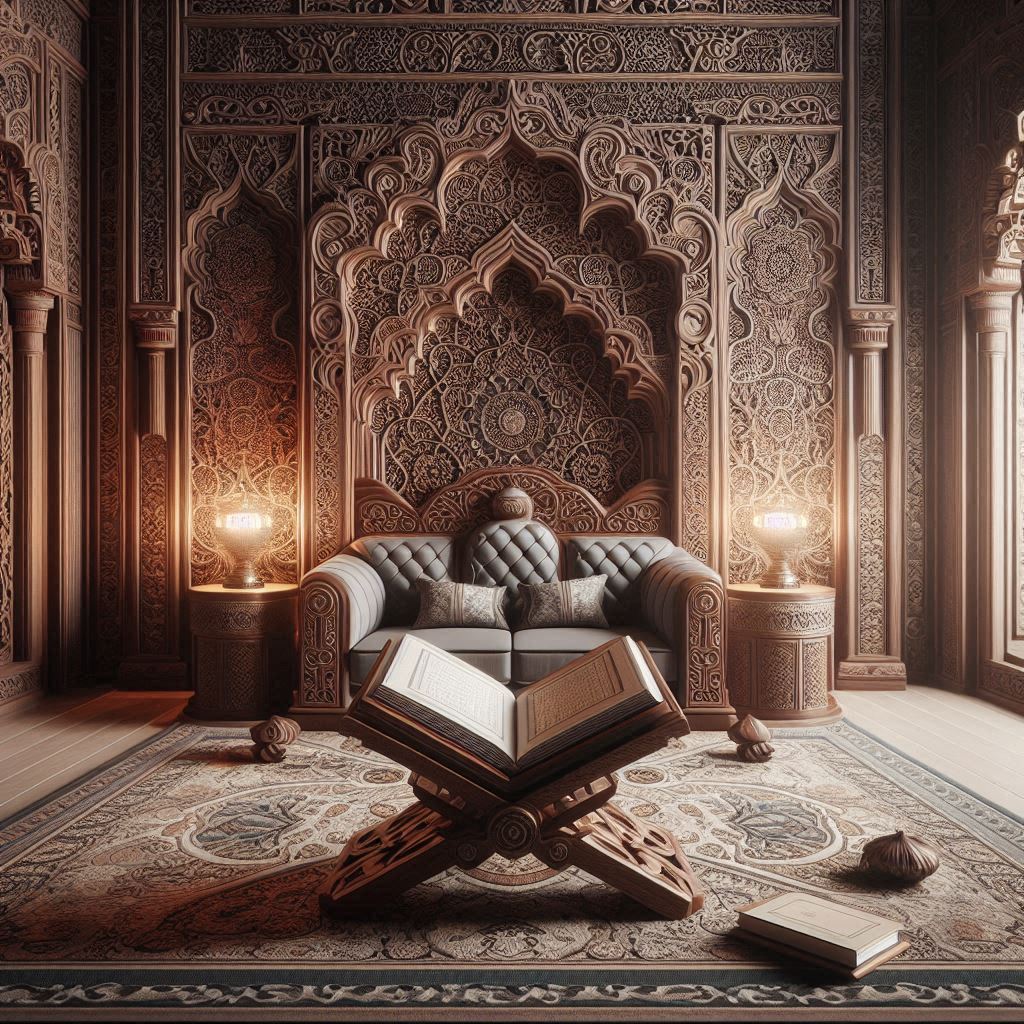 Chinioti Furniture-Rehal
Chinioti Furniture-Rehal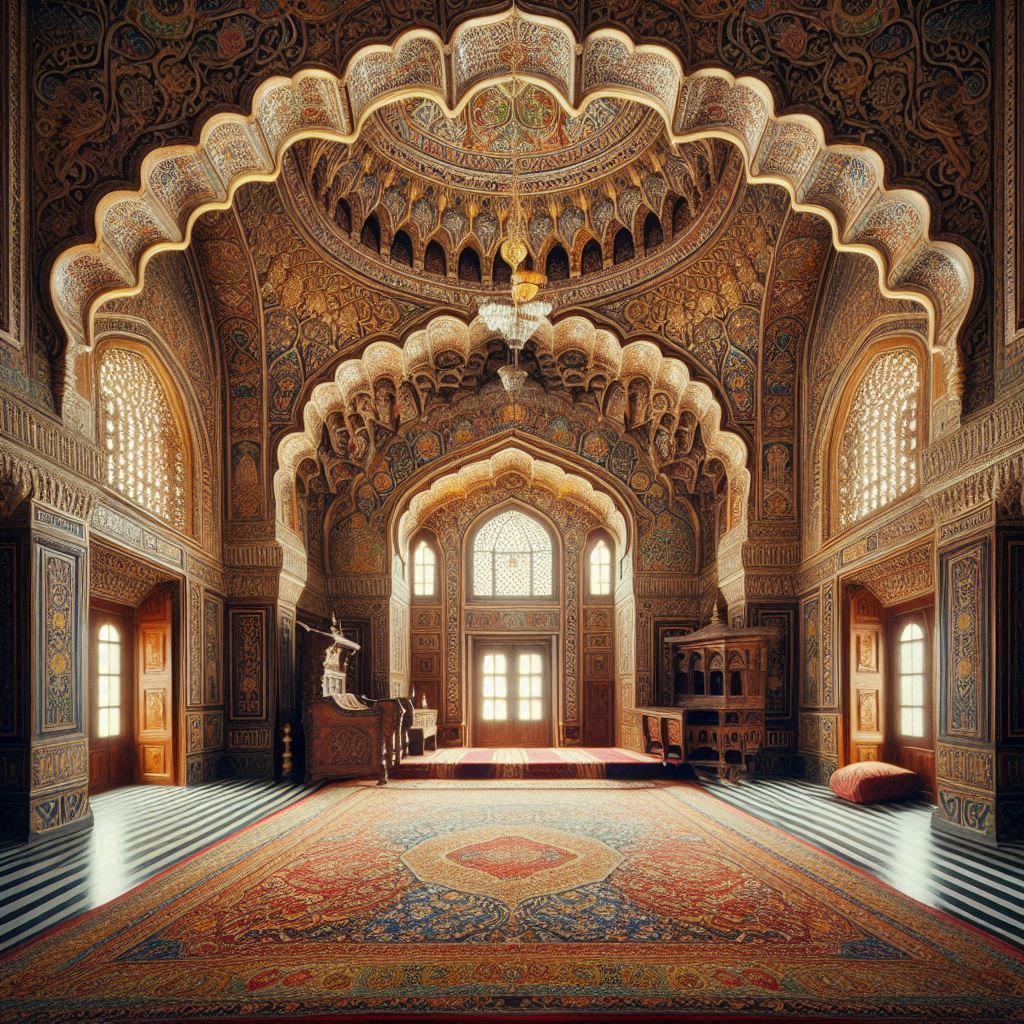 Chinioti Furniture-Mehrab
Chinioti Furniture-MehrabTraditional Chinioti Furniture - Types of Wood Used in Chinioti Furniture
The quality and beauty of Chiniot’s furniture lie not only in its design but also in its material. Only premium solid woods are used:
- Sheesham (Indian Rosewood): The most favored wood due to its strength, grain detail, and polish-ready surface. It carves beautifully, making it ideal for ornate designs.
- Teak (Sagwan): Used for high-end, luxury furniture. It is prized for its natural golden hue, smooth finish, and weather resistance.
- Deodar and Acacia (Kikar): Used occasionally for specific elements or more rustic versions, though not as common as Sheesham or Teak.
Traditional Chinioti Furniture - Signature Design Elements
What makes Chiniot’s furniture instantly recognizable are its traditional design motifs and detailed handwork. Common features include:
- Floral Carvings and Vines: Inspired by nature and Mughal gardens.
- Islamic Geometric Patterns: Reflecting the influence of Islamic art.
- Leafy Scrolls, Rosettes, and Jali Work: Often featured in headboards, mirror frames, and cupboard doors.
- Symmetry and Proportion: Every curve and motif is balanced and intentional.
The finishing is done meticulously—whether in natural polish, lacquer, gold leaf, or antique stains—to enhance the grain and carvings.
Traditional Chinioti Furniture - Cultural Significance and Modern Demand
Chinioti furniture holds cultural prestige across Pakistan. It is considered a must-have in wedding dowries, symbolizing prosperity and tradition. Many families invest in Chiniot-made beds, dressers, and wardrobes for the newlyweds—treasured pieces expected to last for decades.
Moreover, with increasing global recognition, Chinioti furniture is now being exported to the Middle East, Europe, and North America. Diaspora communities often request custom orders to bring a piece of heritage into their modern homes abroad.
Traditional Chinioti Furniture - Challenges and Preservation of Craft
Despite its artistic value, the Chiniot furniture industry faces several challenges:
- Mass production pressures: Factory-made furniture often undercuts traditional pieces in price.
- Lack of apprentices: Younger generations are moving toward urban jobs, leaving fewer successors to carry forward the craft.
- Deforestation and wood scarcity: The availability of high-quality Sheesham and Teak is declining due to overuse and environmental challenges.
Efforts are being made by heritage organizations, export councils, and private entrepreneurs to preserve and promote Chinioti craftsmanship. Some workshops now offer hybrid designs, blending traditional motifs with modern minimalism to appeal to new tastes.
Traditional Chinioti Furniture - Conclusion
Chiniot-based solid wood furniture of Pakistan is more than a collection of beautiful tables and beds—it’s a living tradition, a form of art, and a cultural inheritance. Each piece crafted in Chiniot tells a story of patience, skill, and heritage. In a world of fast furniture and fleeting trends, Chinioti furniture stands as a timeless celebration of craftsmanship, rooted deeply in the soil and soul of Pakistan.
- Home
- Products and Trades
- Traditional Chinioti Furniture


